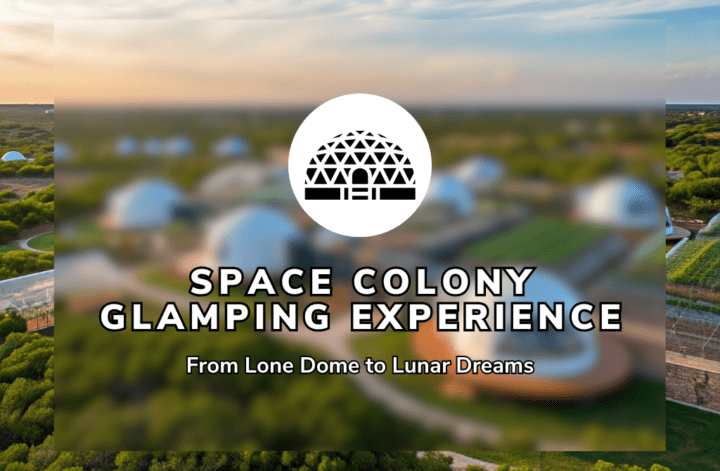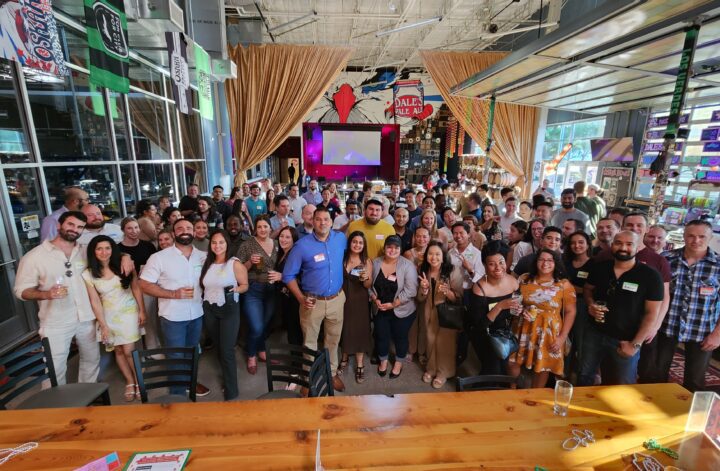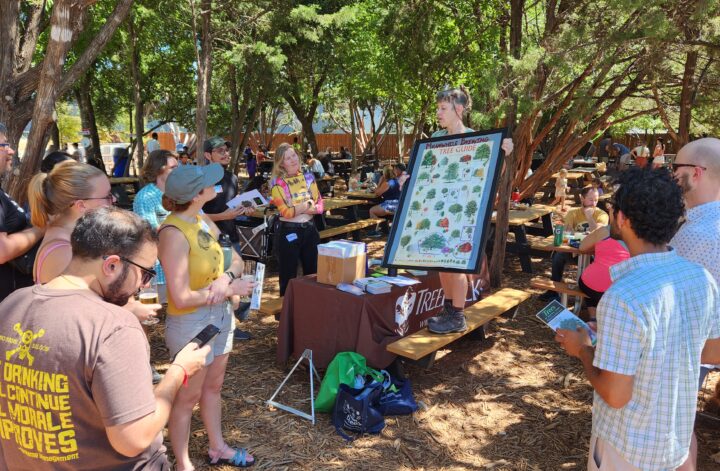What started as a simple prompt request for a “space glamping dome nestled in the Central Texas Landscape” evolved into a refined and realistic visual journey, one that perfectly aligns with the vision I’ve been developing for a unique edutainment experience: a Space Colony Glamping Business. The goal is to offer guests a “pick your own adventure” immersion into the life of a space colonist, right here on Earth. And what better setting than the captivating landscape of Central Texas surrounded by local excursions and seasonal urban events?
Through this iterative prompting process (Google Gemini), we’ve moved from a solitary glamping dome to a vision of a self-contained and interconnected colony habitat in the Central Texas landscape. The images now depict:
- Multiple Geodesic Domes: Clusters of distinctive canvas and glass domes, suggesting comfortable and potentially luxurious living spaces.
- Shipping Container Tunnels: These act as crucial connectors between the domes, creating enclosed pathways and a sense of a unified structure.
- Greenhouses: Lining the shipping container tunnels, these suggest a capacity for food production and a degree of self-sufficiency within the compound.
- A Large Central Dome: Serving as a potential communal hub or central facility within the compound.
- Sun Shade Sails with Rainwater Collection: These practical additions hint at sustainable living and resource management.
- Central Texas Landscape: The setting remains the rolling, often dry, yet beautiful landscape of Central Texas, providing a context for this unique habitat.
- A “Space Compound” Feel: The interconnectedness created by the shipping containers and the presence of multiple dome structures evokes a sense of a planned and potentially isolated community, reminiscent of a small off-world base.
The Genesis: A Tourist’s First Glimpse of the Hab
The initial image prompting led to a solitary space glamping dome that perfectly captures the arrival point for a Guest/Tourist colonist. Imagine stepping out of a transfer vehicle and seeing this sleek, futuristic structure nestled against the familiar yet subtly terraformed backdrop of the Texas terrain. It’s the promise of comfort and unique experiences, a basecamp for exploration into this simulated space colony.
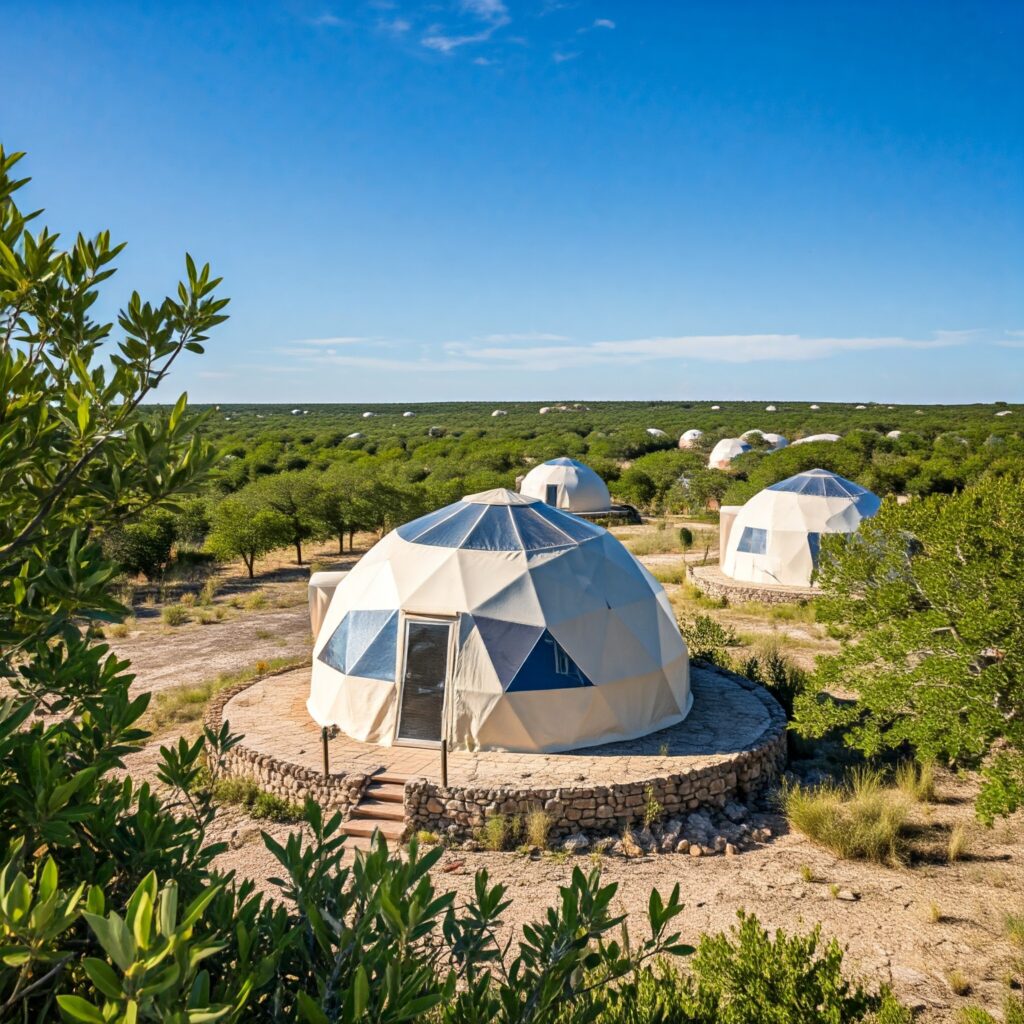

Building a Community: Diverse Roles Within the Colony
As more domes appeared, connected by gabion rock wall dividers, the prompted vision of a diverse colony began to take shape. Each dome could represent a different facet of colonial life. Perhaps one cluster houses aspiring Guest/Farmers, another the dedicated Guest/Scientists conducting research, and yet another the training Guest/Soldiers ensuring the colony’s safety. The privacy walls create distinct zones, fostering a sense of individual roles within the larger community.
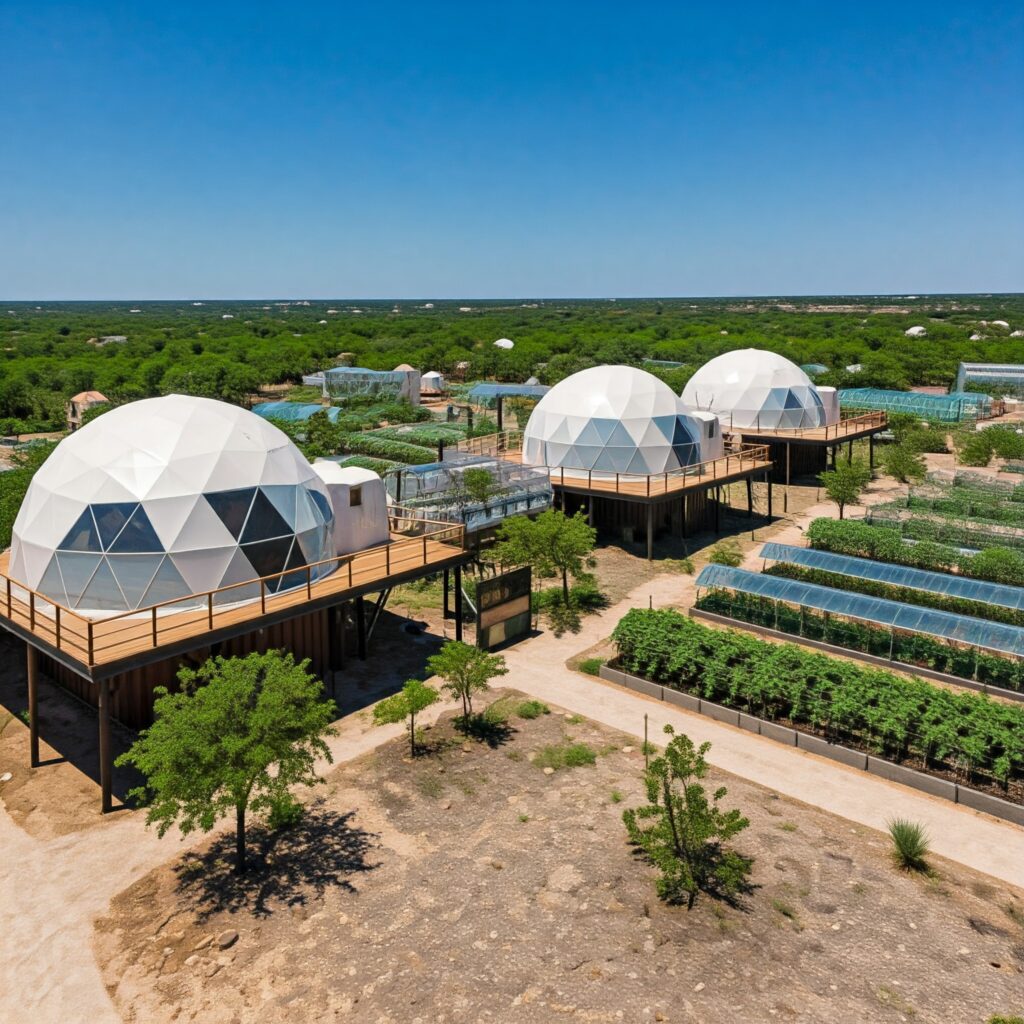


Connectivity and Functionality: The Lifelines of the Colony
The introduction of shipping container tunnels and attached greenhouses is where the “pick your own adventure” truly comes alive. These aren’t just pathways; they are the lifelines of the colony.
- For the budding Guest/Farmer, the greenhouses represent their domain, a chance to learn about hydroponics and sustainable agriculture in a controlled environment, vital skills for off-world sustenance.
- For the inquisitive Guest/Scientist, the connected domes could house labs and research facilities, the shipping container tunnels offering secure passage between experiments and data analysis centers.
- Even for the Guest/Tourist, these interconnected pathways offer a tangible sense of traversing a functional space colony, moving between different operational zones.

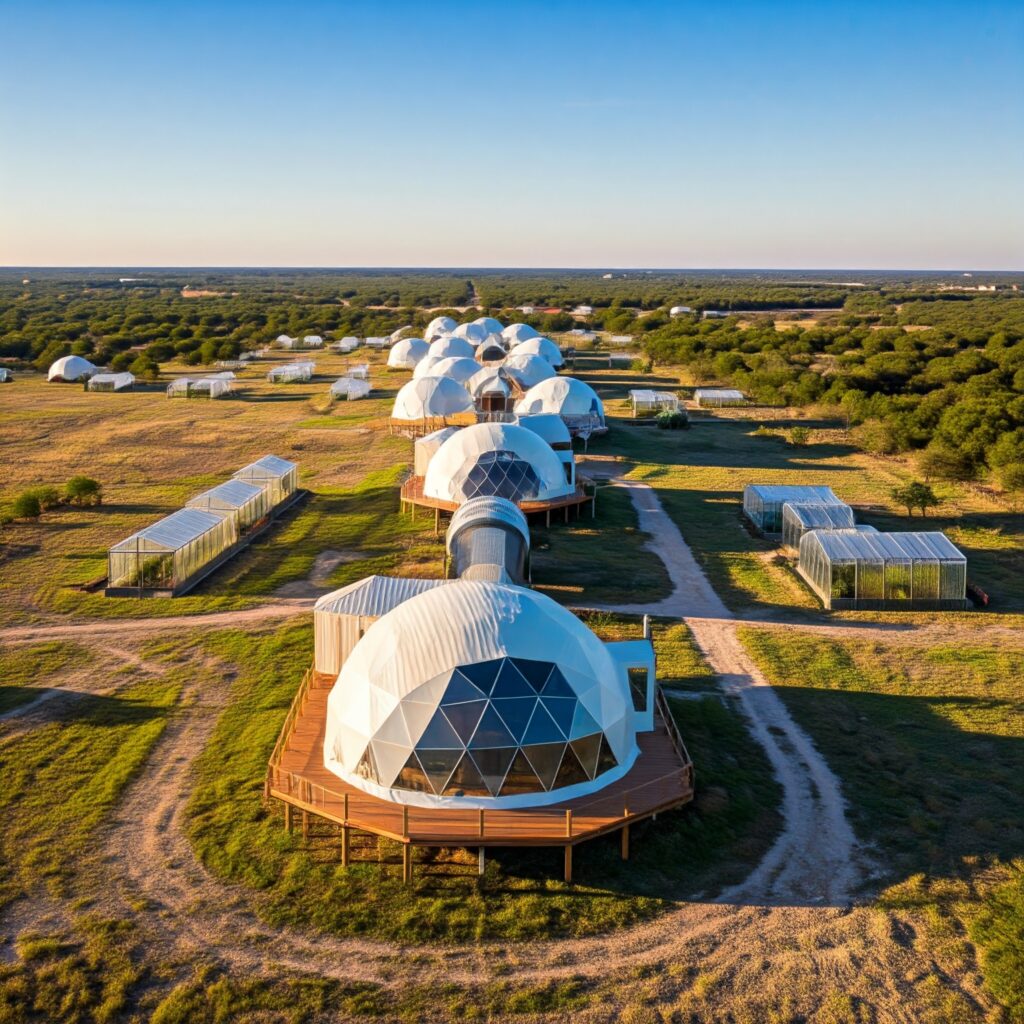

Refining the Structure: A Central Hub for Interaction
The emergence of a central, larger dome solidifies the idea of a communal hub. This could be the central mess hall, the mission control center, or a recreational area where all guest colonists – Tourists, Farmers, Scientists, and Soldiers alike – can interact, share experiences, and learn from one another.

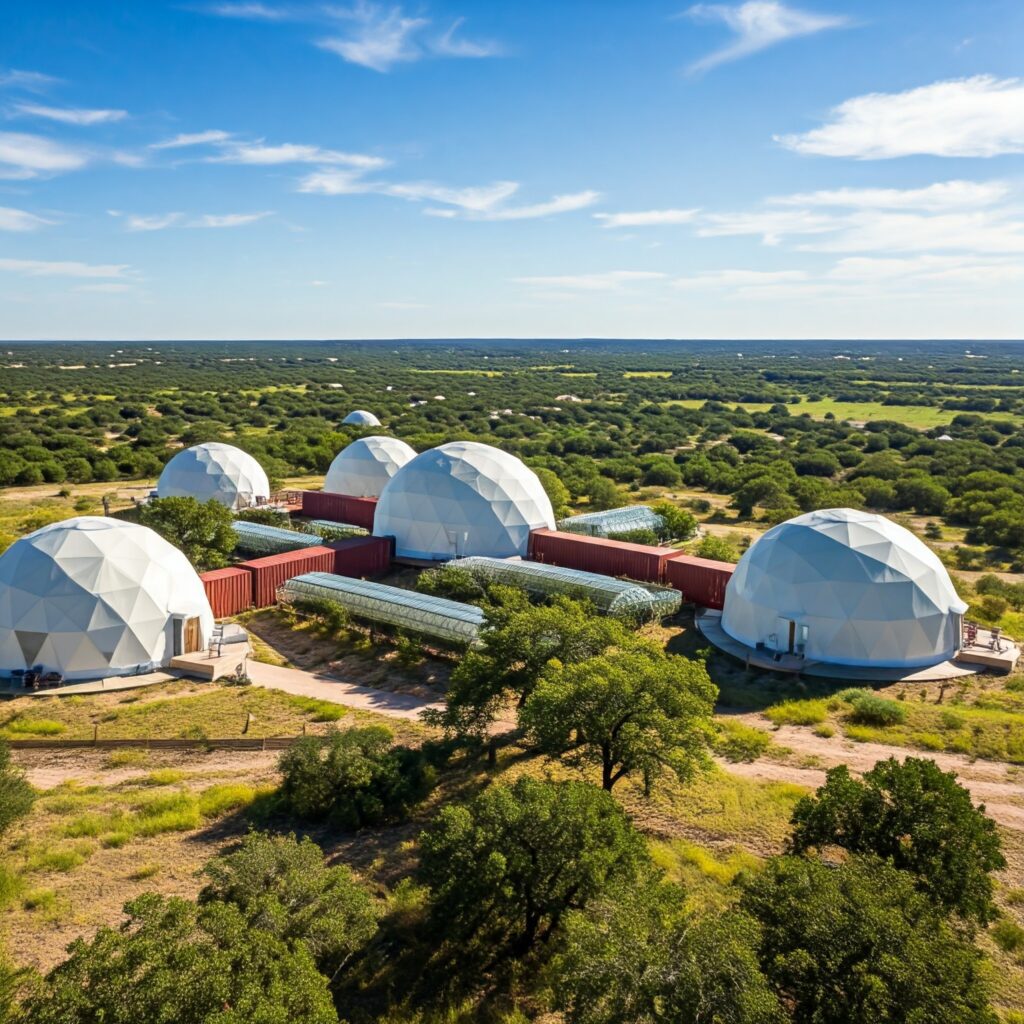
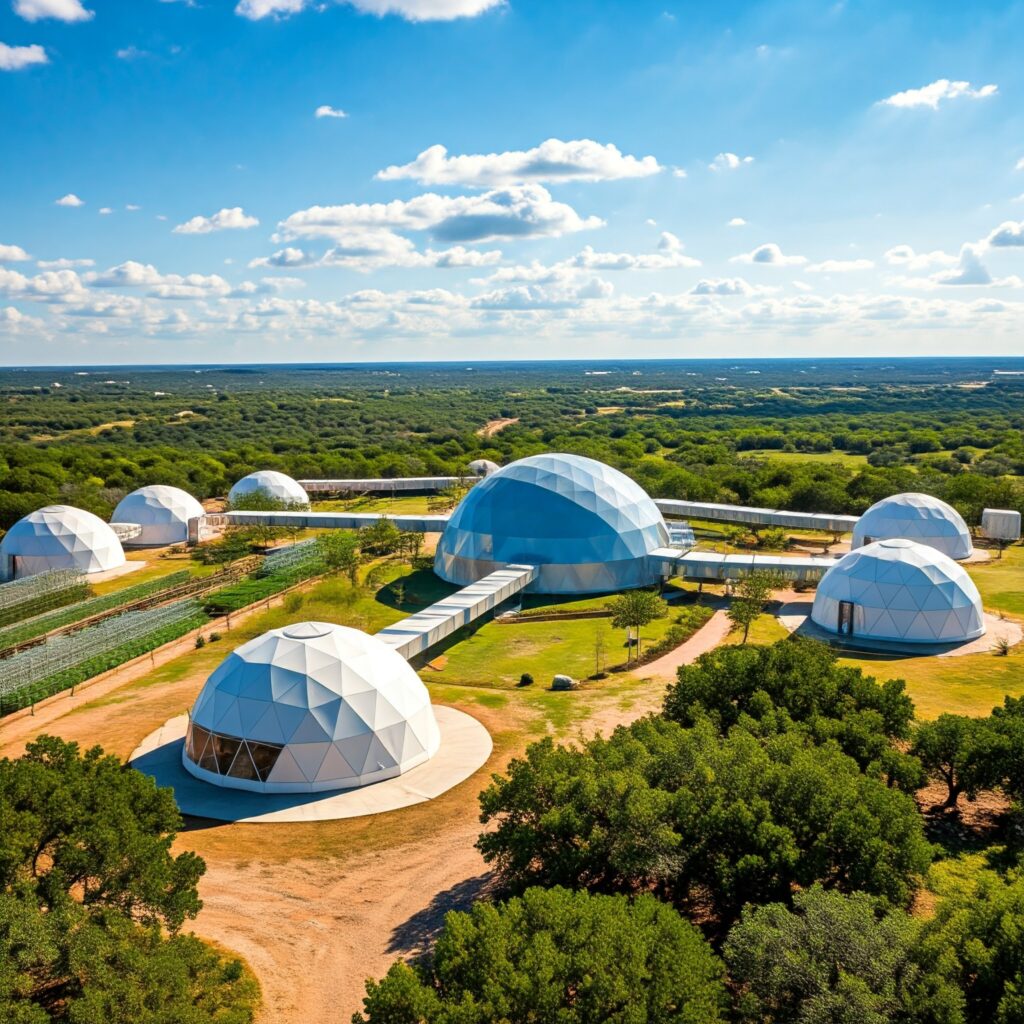
Embracing Sustainability: A Core Colonial Value
The integration of rainwater collection systems via sun shade sails underscores a crucial aspect of space colonization: resourcefulness and sustainability. This element adds an educational layer, highlighting the importance of closed-loop systems and environmental consciousness – a key lesson for all aspiring colonists, regardless of their chosen role.
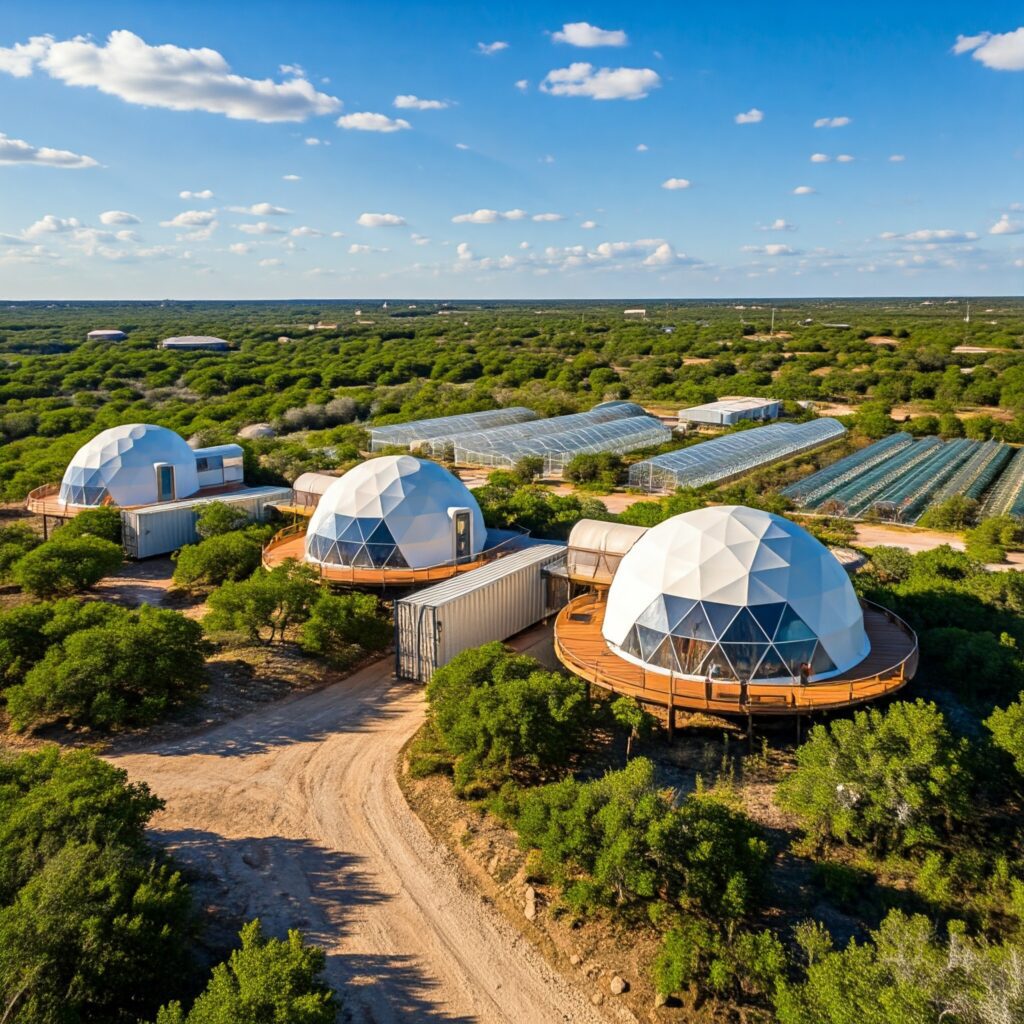
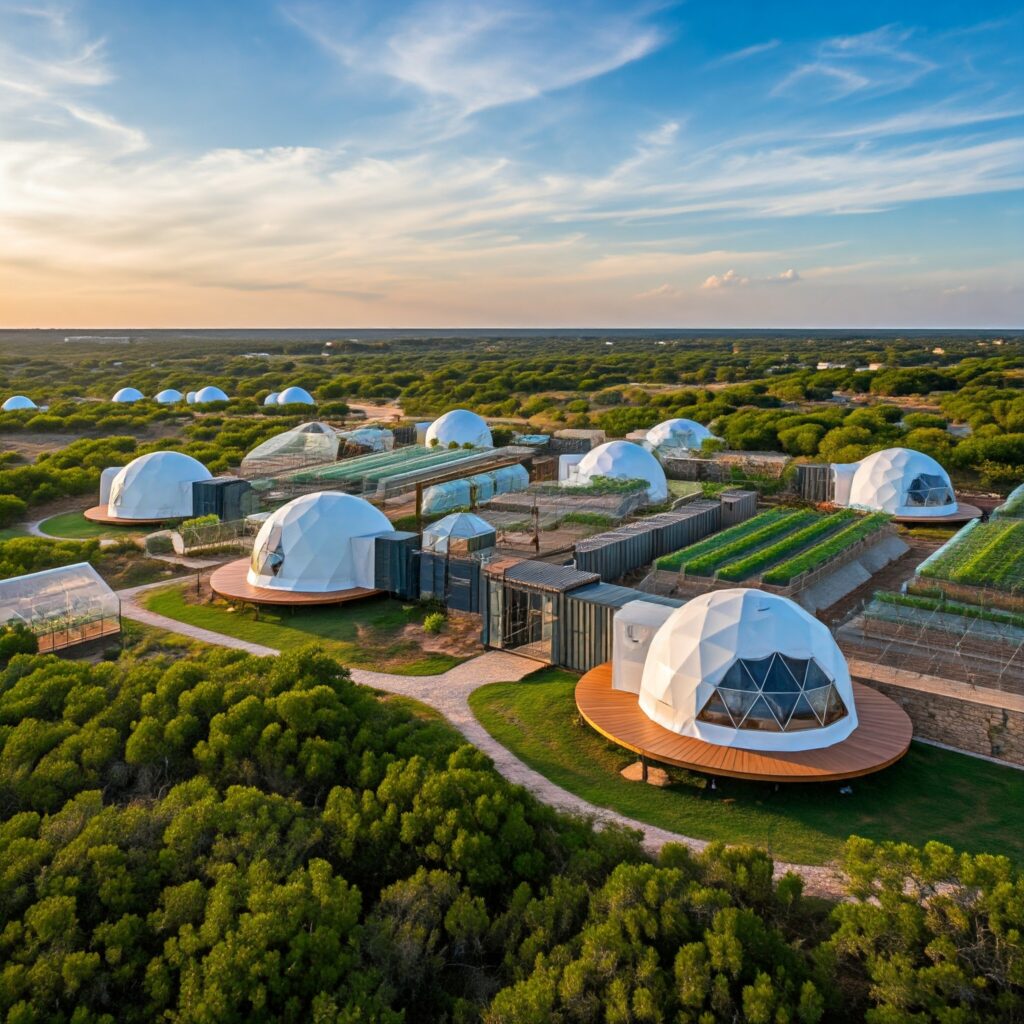
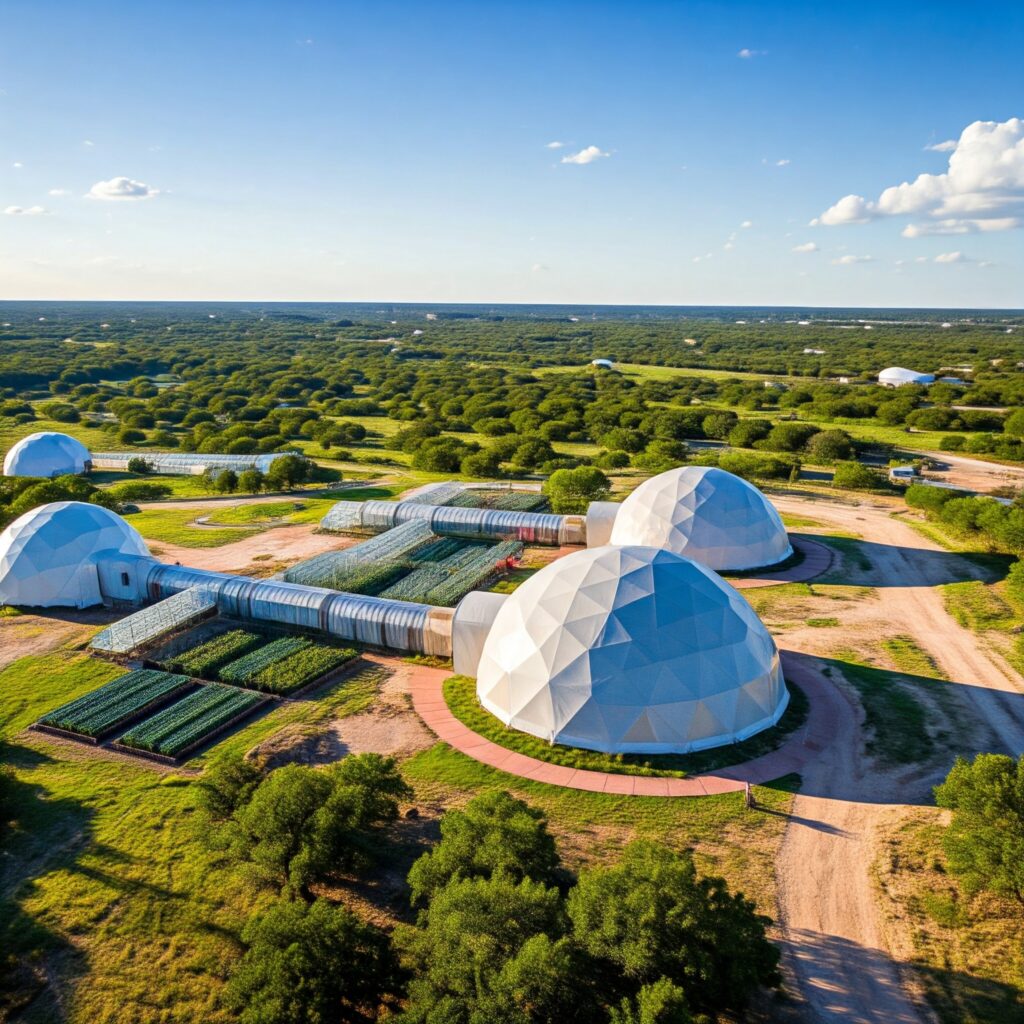
The Culmination: An Immersive Edutainment Experience
The final images, showcasing a network of interconnected domes radiating from a central hub, perfectly encapsulate the vision for Space Colony Glamping. Guests will not just be staying in unique accommodations; they will be stepping into a role, experiencing a simulated future. The layout fosters exploration and interaction, allowing individuals to delve into the challenges and triumphs of different colonial professions.
Imagine a Tourist spending a day assisting the Farmer in the greenhouse, learning about Martian soil analogs. Or a curious guest shadowing a Scientist as they monitor experimental growth chambers. Perhaps others might participate in a simulated security briefing with the Soldiers. The interconnected domes, facilitated by the shipping container tunnels, create a seamless and immersive environment for these “pick your own adventure” scenarios.
This visual journey, driven by simple prompts, has brought the concept of Space Colony Glamping in Central Texas to life. It’s not just about unique lodging; it’s about education through experience, about offering a tangible glimpse into the future of human habitation beyond Earth, right here under the Texas sky. The visual foundation is set – now, the adventure truly begins!
Inspiration from Earthbound Innovations
The vision for Space Colony Glamping is deeply rooted in real-world examples of innovative and sustainable living, drawing inspiration from places I’ve had the privilege to visit:
- Earthship Community (Blog Post): The self-sustaining principles of Earthships, with their reliance on recycled materials and natural systems, directly inform the design of our dome habitats. The emphasis on water harvesting, temperature regulation, and food production mirrors the crucial elements of a successful space colony.
- Monolithic Dome Institute (Blog Post): The structural integrity and energy efficiency of monolithic domes make them ideal candidates for both terrestrial and extraterrestrial habitats. Their ability to withstand extreme conditions and their inherent insulation properties are essential considerations for long-term space colonization.
- Biosphere 2 (Blog Post): This closed ecological system serves as a powerful model for creating a self-contained and balanced environment. The challenges and successes of Biosphere 2 provide valuable insights into the complexities of creating a sustainable habitat, whether on Earth or another planet.
- Arcosanti (Blog Post): Arcosanti’s focus on arcology – the fusion of architecture and ecology – resonates with the goals of Space Colony Glamping. The concept of creating a human habitat that is integrated with the natural environment, minimizing its impact and maximizing resource efficiency, is central to both projects.
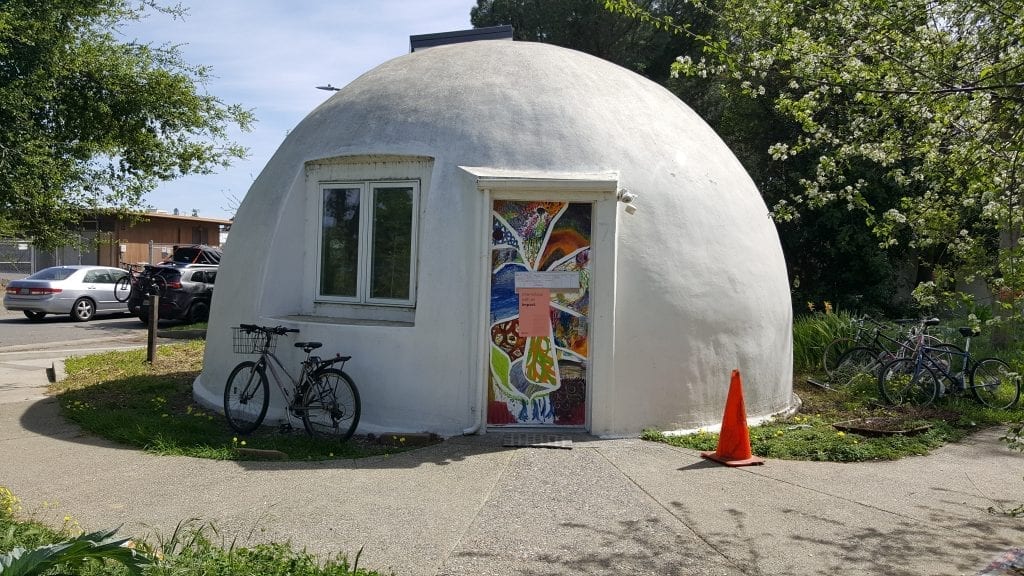
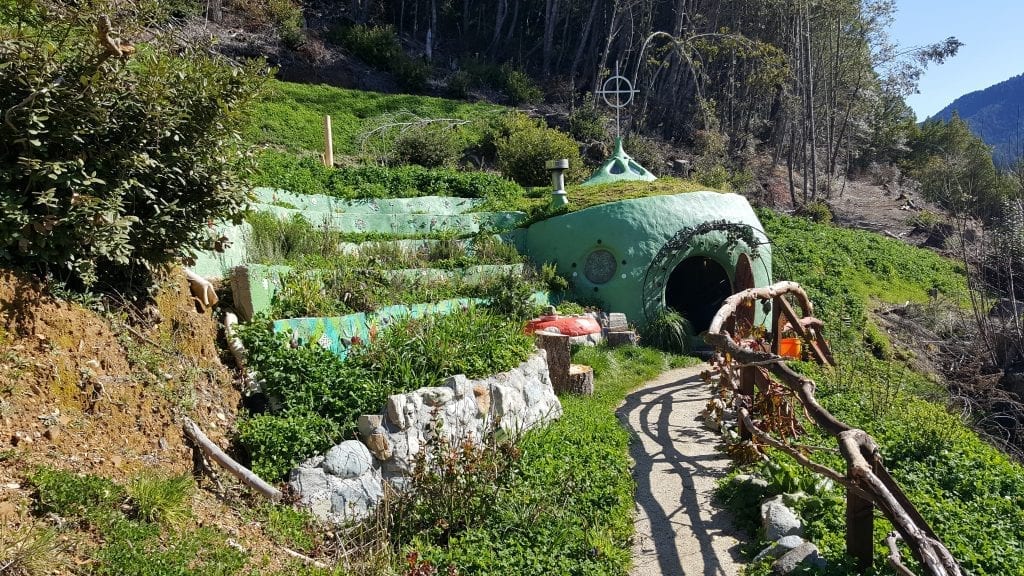

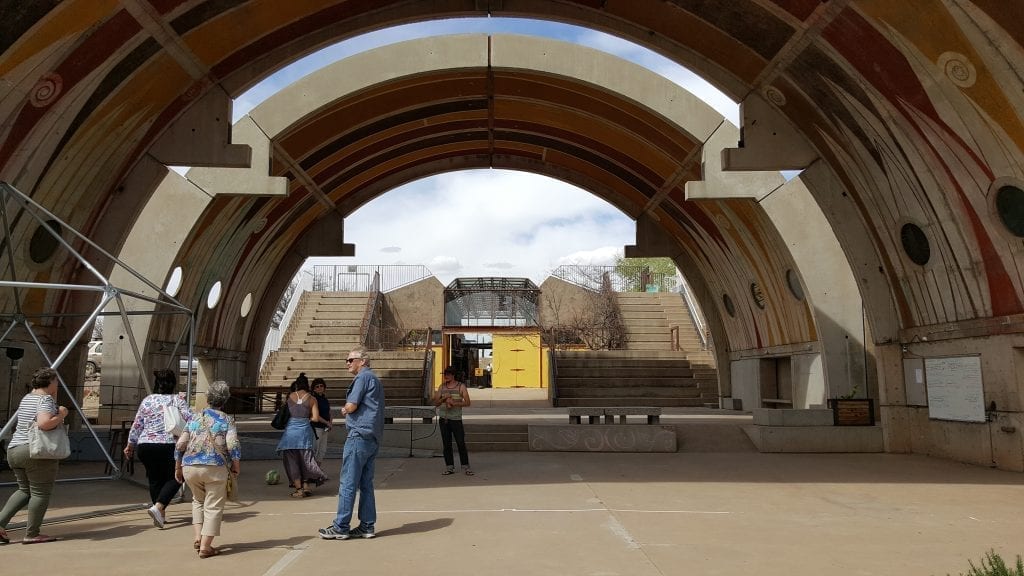
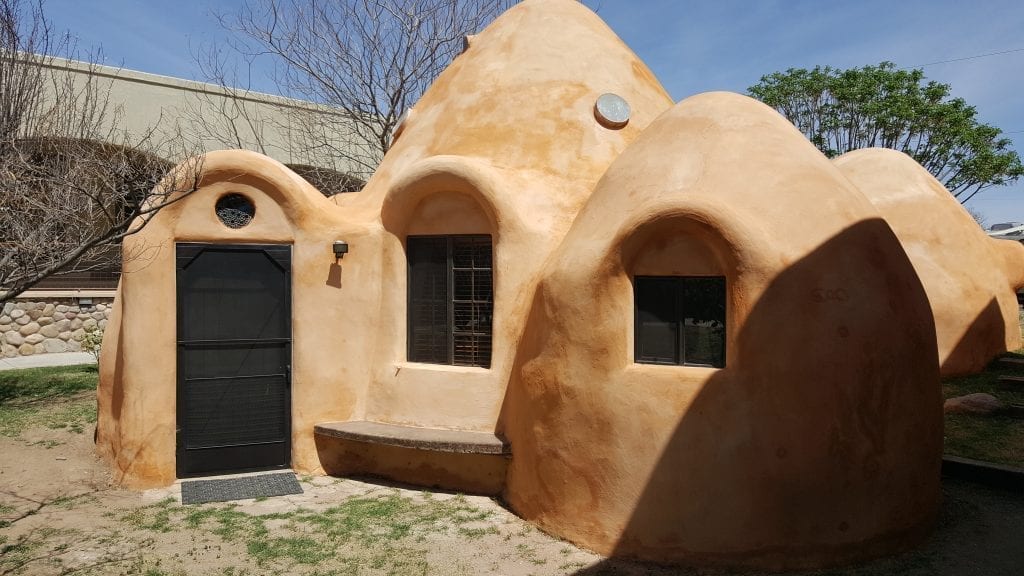
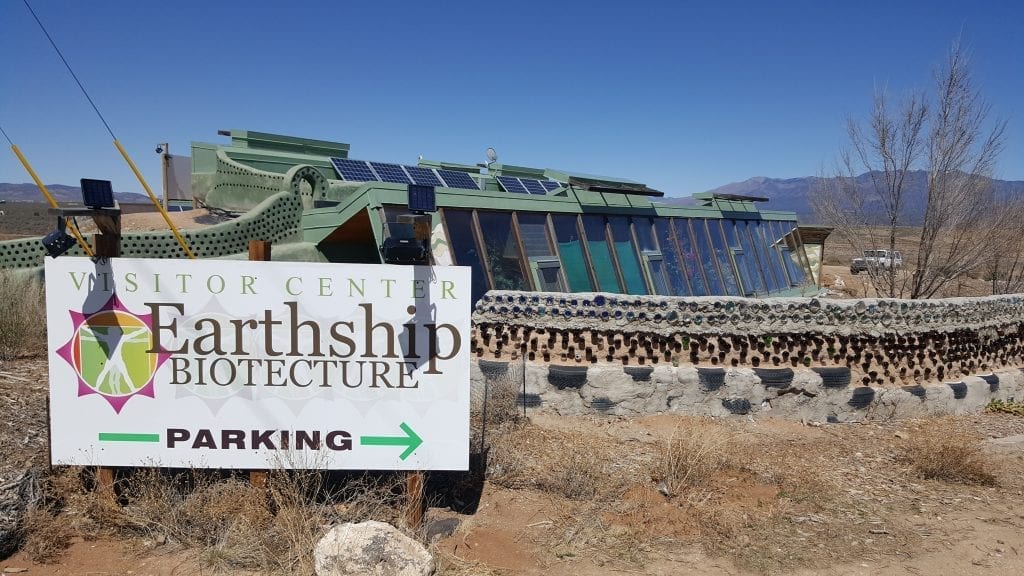

These experiences have solidified the belief that sustainable and innovative living is not just a futuristic dream, but a tangible possibility. Space Colony Glamping aims to translate these real-world lessons into an immersive and educational experience, inspiring a new generation of explorers and innovators.
What aspects of these inspirations resonate most with you? What other elements would you like to see incorporated into the Space Colony Glamping vision?
ChatGPT Prompt Iteration Visuals
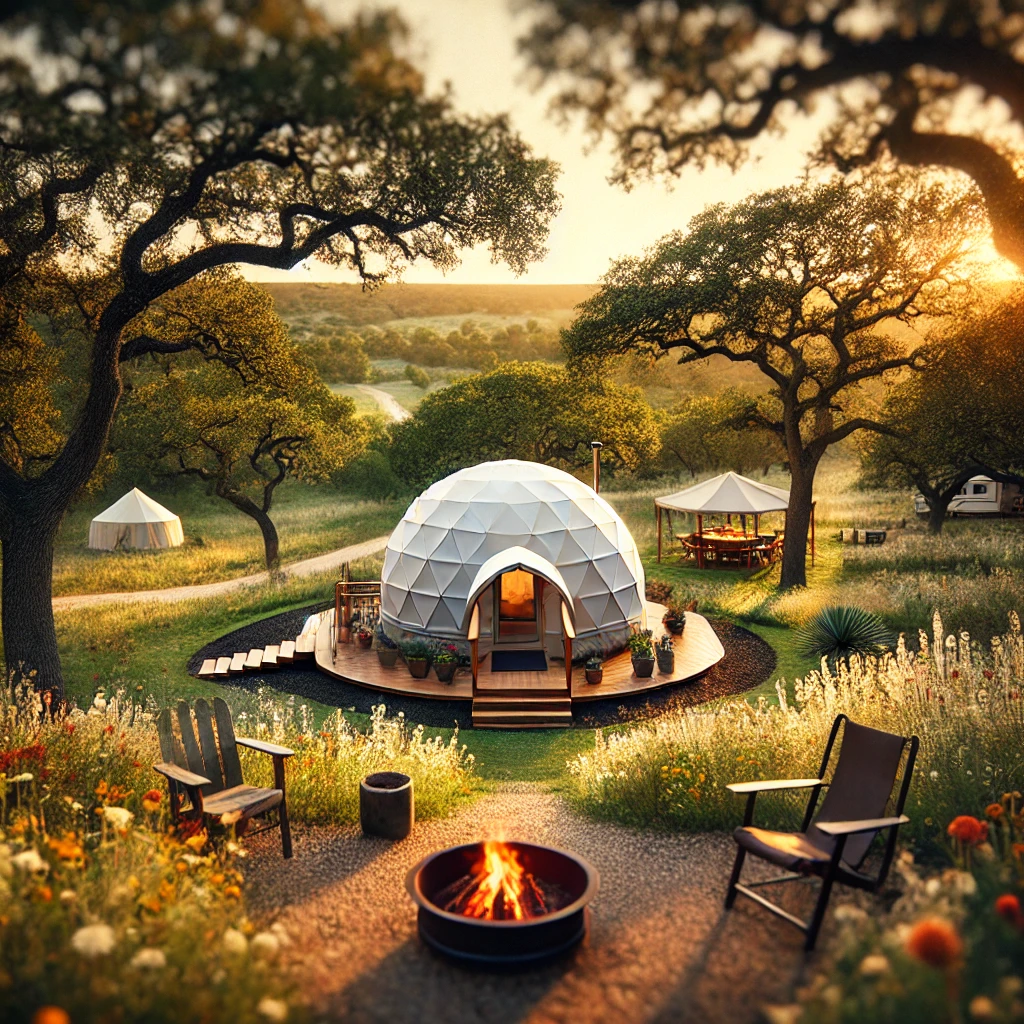

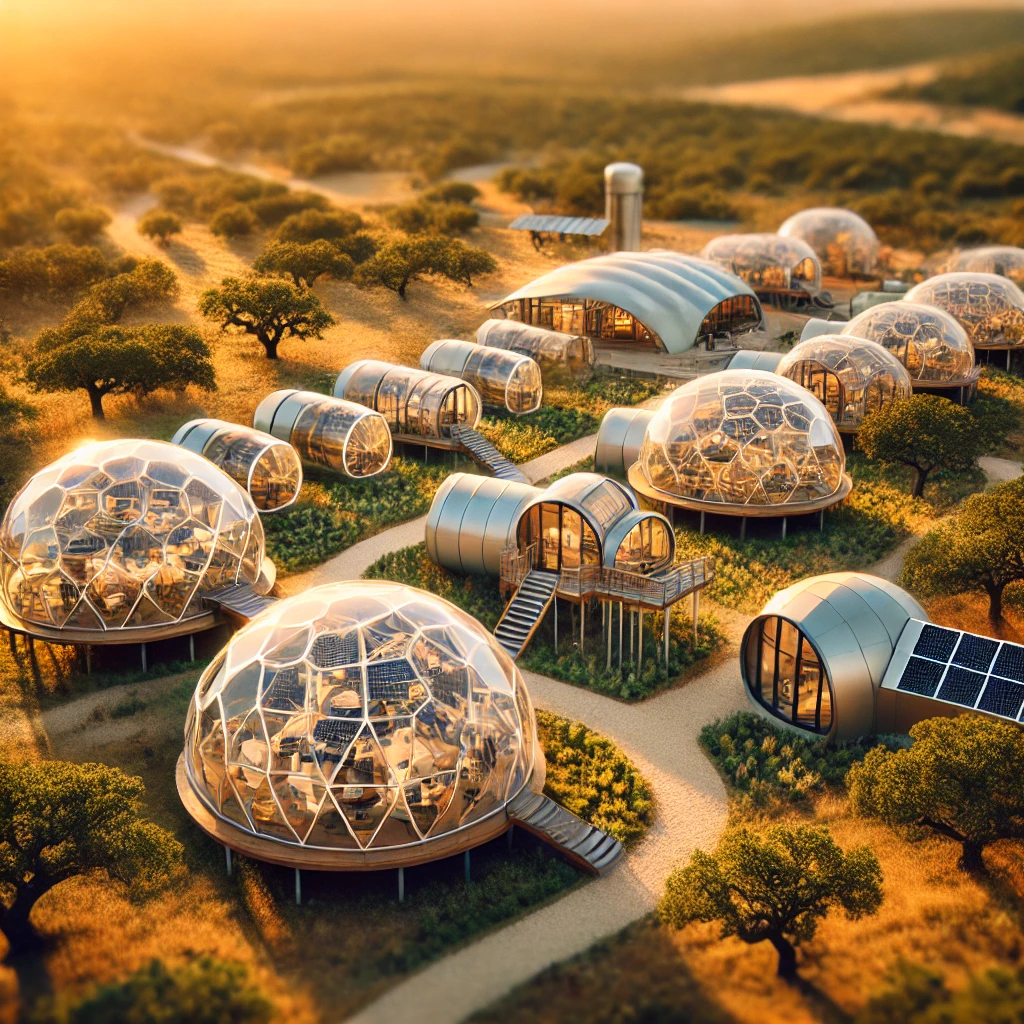

*Content was generated with AI based on my notes and direction, then edited and refined by me for accuracy.

